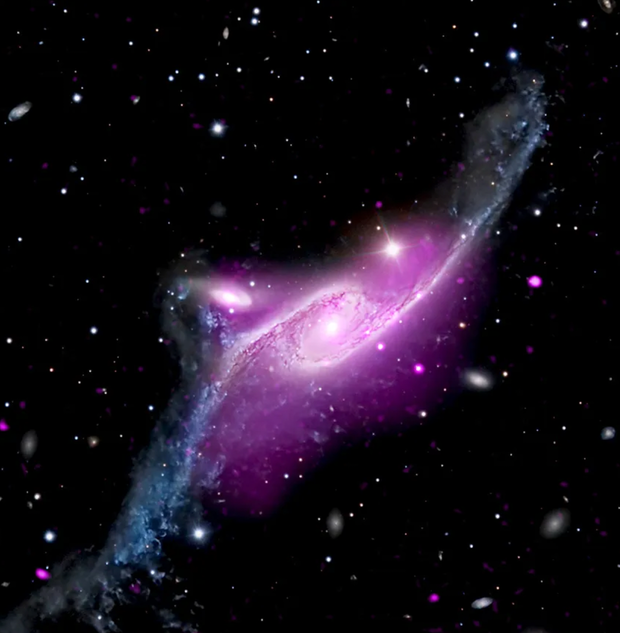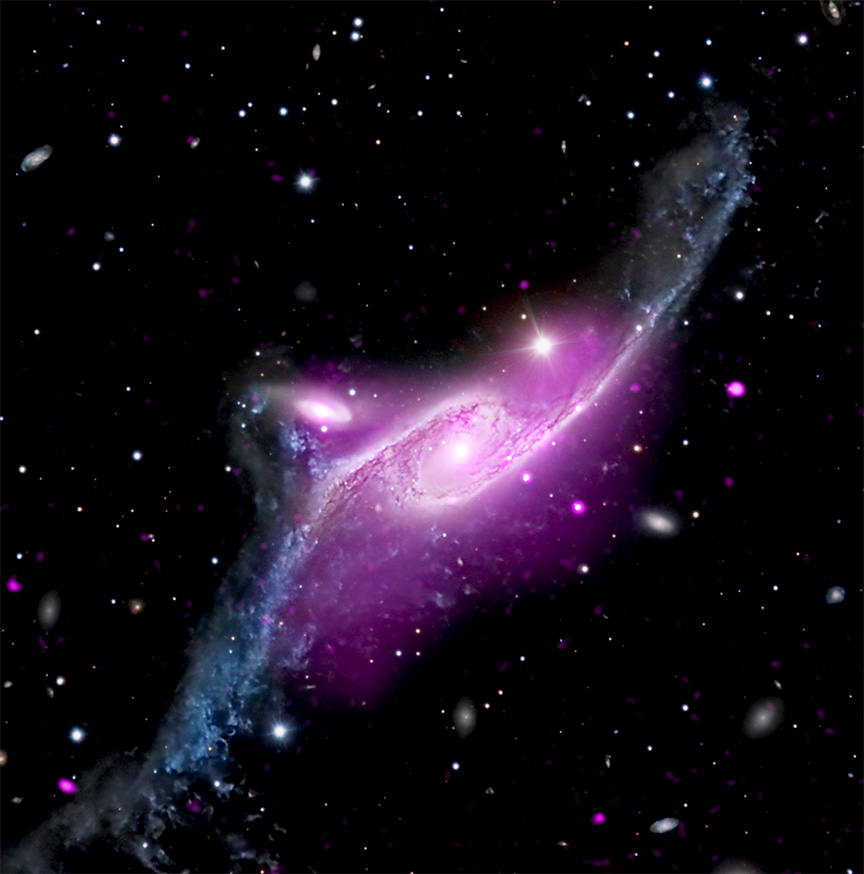
To mark the 25th anniversary of NASA's Chandra X-ray Observatory, the space agency has released a series of never-before-seen images showcasing a diverse range of cosmic objects. These images, which combine data from Chandra with that from other observatories and telescopes, demonstrate the power of X-ray astronomy in exploring the universe.
The first image, titled '25 Images to Celebrate NASA's Chandra 25th Anniversary,' features a collection of intriguing cosmic phenomena. Among them are supernova remnants, galaxy clusters, and active galactic nuclei. One image stands out for its striking resemblance to a peacock's tail feathers, hence the name 'Peacock Galaxy.' This barred spiral galaxy is located in the Pavo constellation and measures over 522,000 light-years across.
Another image, titled 'Chandra Sees the Peacock's Galaxy,' offers a closer look at NGC 6872. This massive spiral galaxy is home to a supermassive black hole and is approximately five times the size of the Milky Way. The Chandra team, which includes astronomers from various institutions in the United States, Chile, and Brazil, has been studying this galaxy since its discovery in 2013.
Despite these exciting discoveries, NASA faces budget cuts that could impact the future of Chandra. Reports suggest that layoffs of Chandra staff are expected in August, affecting dozens of astronomers. The mission's head, Mark Clampin, has expressed concern about the potential loss of this valuable scientific resource.
In conclusion, NASA's Chandra X-ray Observatory has made significant contributions to our understanding of the universe over the past 25 years. Its ability to detect X-rays and reveal hidden structures in space continues to inspire awe and fascination among scientists and the public alike. As we celebrate this milestone anniversary, it is essential that we recognize the importance of continued funding for missions like Chandra, which push the boundaries of our knowledge and fuel our curiosity about the cosmos.








